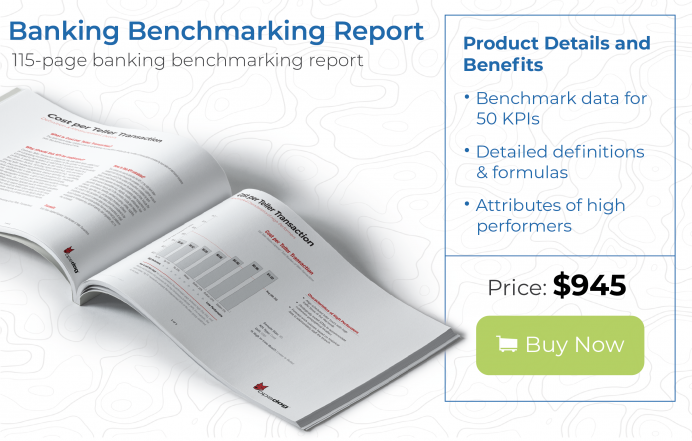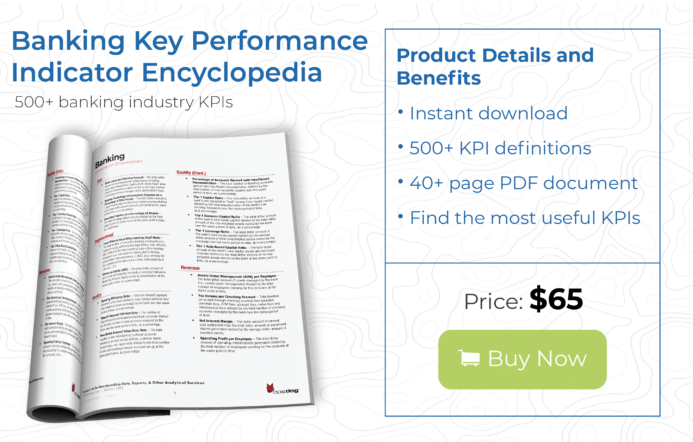New digital lenders are seriously disrupting the mortgage and consumer lending industries. These lenders are lean and mean—and they deliver great rates and excellent customer service to borrowers. In order to compete, lenders need to up their game and make their lending process—whether online or offline—as efficient and cost-effective as possible. How can you do that? Learn how to make key performance indicators for loans work for your financial institution.
What are Key Performance Indicators for Loans?
Key performance indicators (KPIs) for loans can be defined as metrics or measurements that encompass various activities in the lending process which are used to track performance.
Lending is not as lucrative as it used to be. A continued low-interest rate environment, pressure from fintech start-ups, and increasing borrower demands for fast approvals and closings are putting the squeeze on lenders. It’s more important than ever that lenders benchmark their performance to evaluate where they stack up compared to competitors and identify areas that they can improve to reduce costs and boost profitability.
Use key performance indicators for loans to benchmark consumer and mortgage loans and evaluate the performance of your lending operation. As you tweak your operations, KPIs will let you know if you are moving the levers in the right direction or if you need to look deeper into the root causes of poor performance.
Benefits of Using KPIs in Lending Operations
KPIs can measure a wide variety of key lending functions including how long it takes to originate a loan, how effective your digital lending platform really is, whether you’re over- or under-staffed, and how efficient you are at identifying loans at risk of becoming non-performing.
For instance, if you determine that the average operating cost to service a mortgage is high, you can examine your loan servicing activities for redundancies. Begin eliminating duplicate work and automating manual tasks to see if you can lower your servicing costs.
If you find that total revenue per mortgage loans is low, investigate what fees other lenders are charging to see if you should increase your fees. Since loan origination fees are usually based on the loan amount, you may want to focus on originating higher dollar value loans.
Lenders, in an effort to reduce costs and meet borrower demand for convenience, have been rolling out digital lending platforms. While many of these platforms do a decent job of attracting borrowers, the loan process isn’t as streamlined as borrowers expect, causing some to abandon the application process or to rely on expensive channels such as face-to-face interactions with loan officers to complete the loan. Whatever savings lenders hoped to achieve with digital disappear.
Tracking key performance indicators for loans around digital lending—how many loans actually close, how long it takes to close, or the average cost of a digital loan—provides a wake-up call that your digital process needs improvement.
Key Performance Indicators for Loans Examples
From originating to servicing loans, mortgage and consumer loan KPIs identify a wide-range of issues that could be impacting loan performance. The following are five often-used key performance indicators for loans.
Loan KPI Metric #1: Mortgage Pull-Through Rate
Mortgage pull-through rate measures the percentage of mortgage loans actually closed and funded compared to the number of applications. Also called loan application conversion rate, a low rate indicates that you may be wasting time on loans that will never close. The issues could include taking too long to underwrite the loan, borrower confusion on next steps, and lack of competitive rates.
To calculate, divide the number of new mortgage loans and refinances that you’ve funded and closed by the total number of loans applied for, as a percentage. Only include applications that borrowers fully completed.
Loan KPI Metric #2: Unit Cost: Mortgage Loan Servicing
Of course servicing loans costs you money: the key is to get those costs as low as possible to generate more revenue and increase loan portfolio profitability. There’s lots of areas ripe for cost-cutting, including call center operations and payment processing. Moving customers to self-service options also reduces costs.
To calculate unit costs, divide the total cost of mortgage loan servicing by the number of mortgage loans in your portfolio. Servicing costs include labor, technology, occupancy, and other overhead.
Loan KPI Metric #3: Consumer Loans Serviced per Consumer Loan Servicing Employee
Having fewer employees servicing consumer loans directly increases the profitability of your consumer loan portfolio. While you want employees to be as efficient and productive as possible, you don’t want to sacrifice customer service. The key to this key performance indicator for loans is to find a balance between staffing levels and customer service and to make your servicing process as streamlined as possible.
To calculate, divide the total number of outstanding performing and non-performing consumer loans in your portfolio by the number of consumer loan servicing employees. Include any employee that services consumer loans, including those in the call center, collateral management, loss mitigation, collections, and payment modification areas.
Loan KPI Metric #4: Origination Revenue per Mortgage
Lenders make money on loans through origination fees, underwriting fees, broker fees, and other loan processing or administrative fees. If you are not making as much revenue as your peers, it could be that you have more lower value loans or are charging a lower percentage for originations than other lenders.
To calculate origination revenues, divide your mortgage loan origination revenue by the number of loan originated.
Loan KPI Metric #5: Percentage of Mortgage Applications Originated Through the Internet
Borrowers love the ability to apply and be approved for a mortgage loan digitally. And for lenders, digital loans cost less to originate than in-person loans. However, mortgage loans are more complex than most other types of consumer lending so lenders have to work hard to create an easy-to-use interface that encourages mortgage borrowers to complete the entire origination process online.
To calculate, divide the number of mortgage applications originated through the internet by the total number of mortgage applications originated, as a percentage.
Final Thoughts
Low interest rates and increased competition have made it imperative that lenders remove as much friction from their origination and servicing processes as possible. Benchmarking and KPIs measure how you compare to other lenders and provide you with direction on what you need to improve to increase revenues and profitability in the lending function.
There are many key performance indicators for loans that should be taken into consideration, for a full list of lending process metrics download our Banking Key Performance Indicator Encyclopedia.
If you need additional help benchmarking against your peers or building a strong lending KPI library, then help yourself to our presentation-ready Commercial Lending Benchmarking Report, or contact us for more information about our https://opsdog.com/services/benchmarking. We can help you quickly and efficiently benchmark your lending operations and provide you with high-quality deliverables perfect for presentations at an affordable price.




